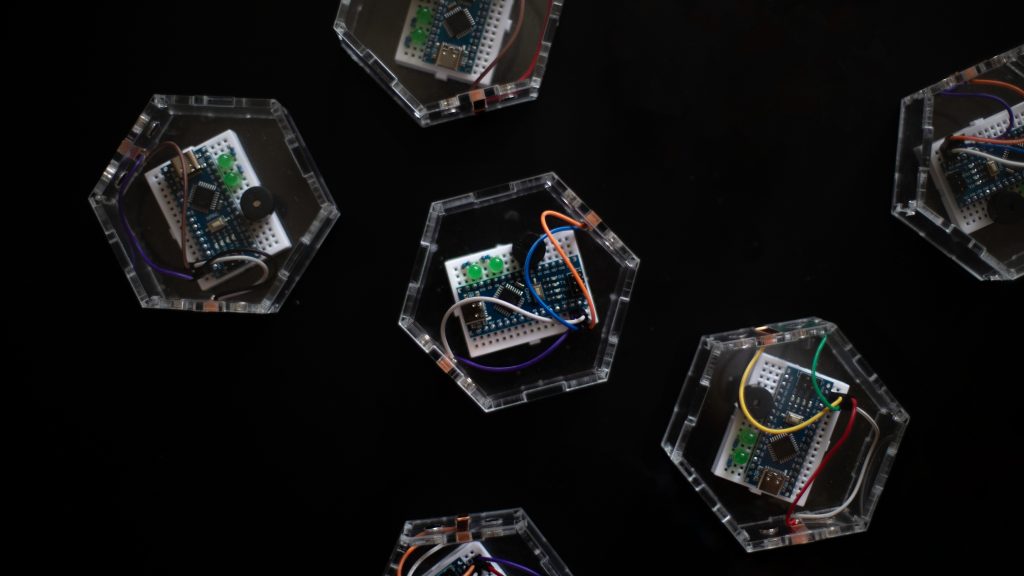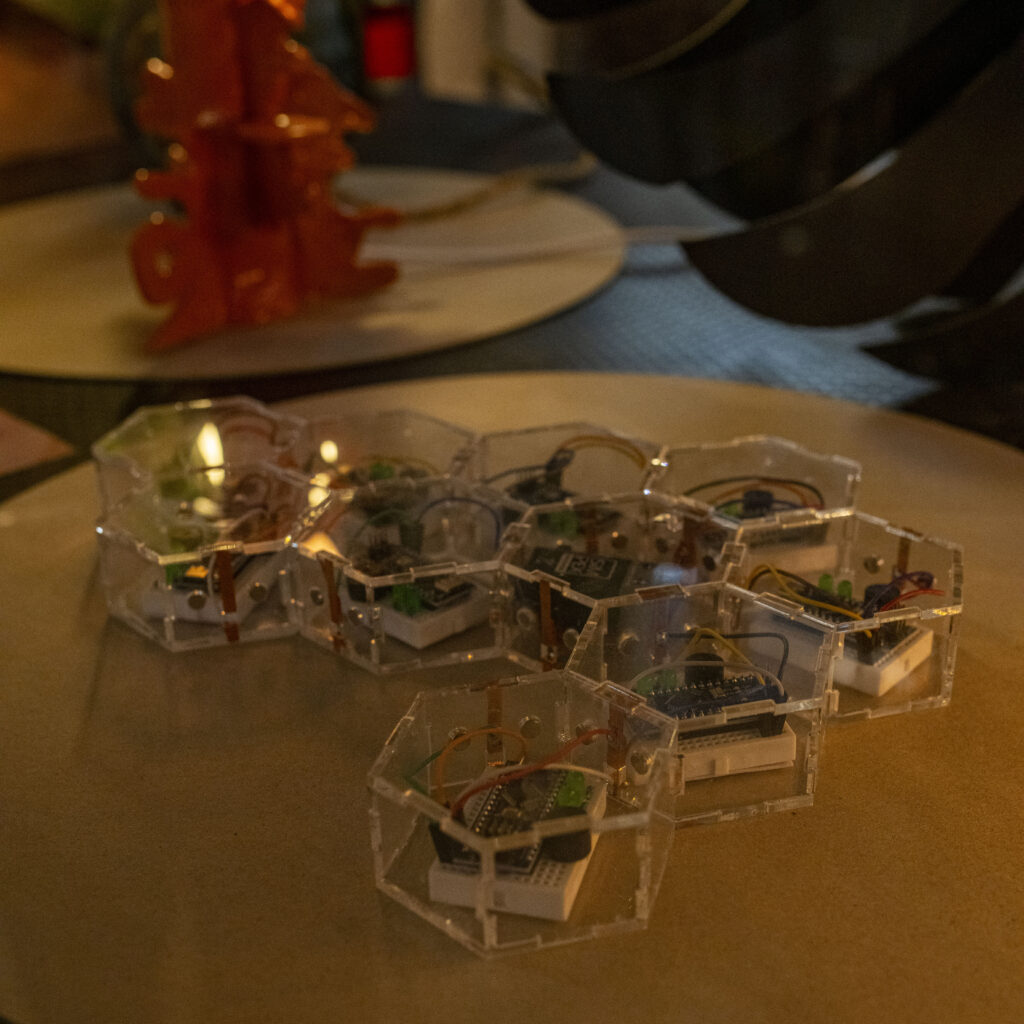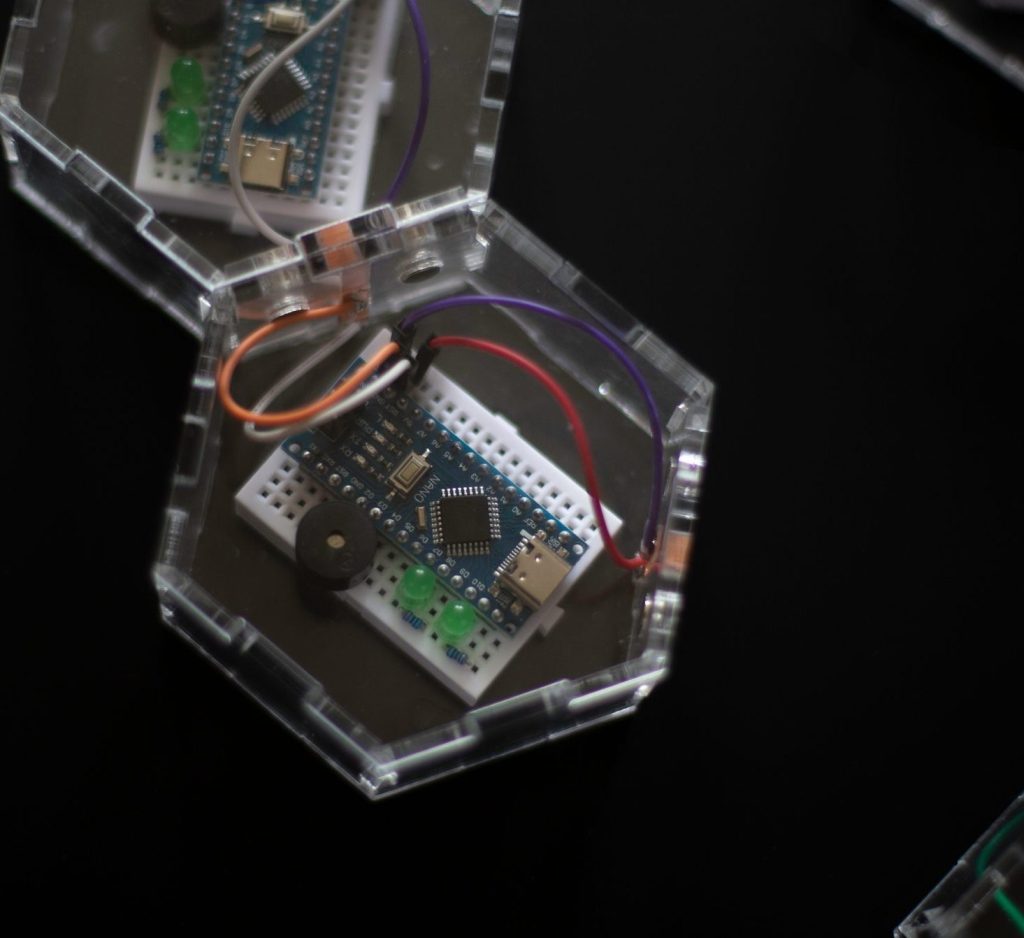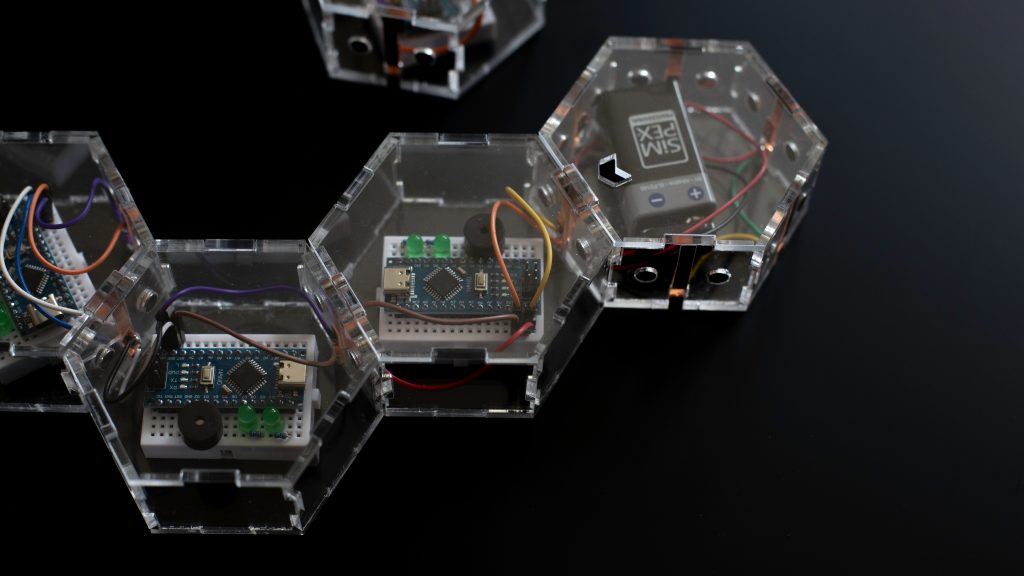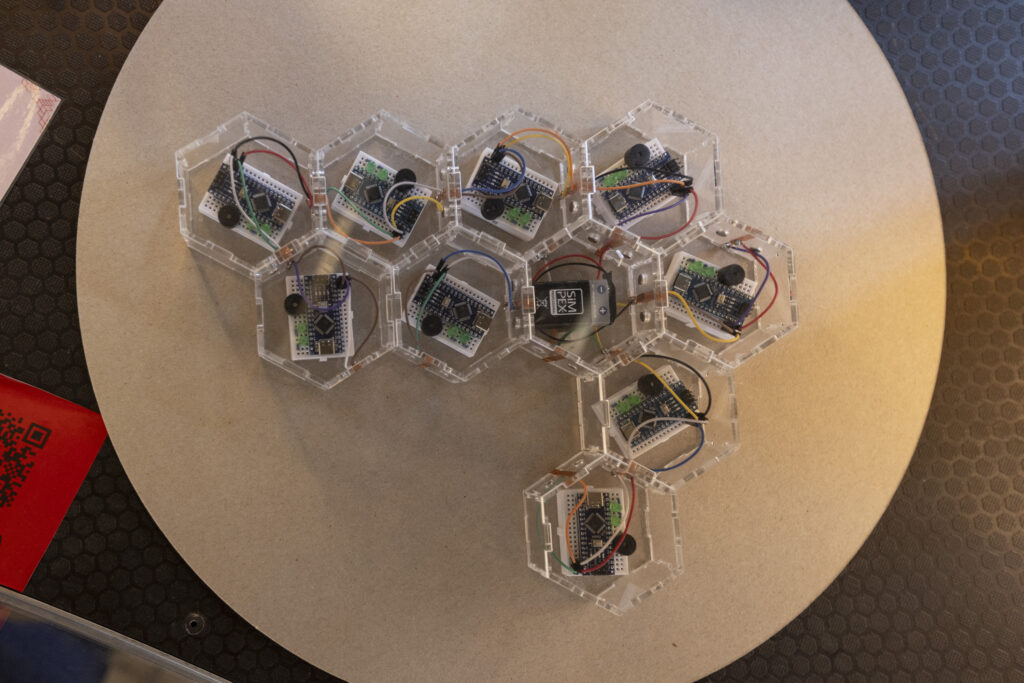Galántai Maja
Maja Galántai earned her bachelor’s degree in graphic design from the Moholy-Nagy University of Art and Design, where she is currently pursuing her master’s degree. She has a wide range of interests and has previously earned certifications as an ice hockey coach and a wood industry technician, even working in those fields. She applies her experience as a carpenter to graphic design, particularly in creating unique packaging. Her aim is to explore the broadest spectrum of graphic design, with interests spanning both digital and physical product design. Her work has been exhibited in several exhibitions, and she has received the Best of Graphics award and the Stefán Lengyel Excellence Scholarship at MOME, a Blue rating for her Stencil Type Specimen book at the RGB Kreatív Awards, and a Winner rating for the title sequence of Gogol: Diary of a Madman at the DNA Paris Design Awards.
About the object
Retrofuturist games
During this semester, she explored retrofuturism and the philosophy of Immanuel Kant. Her two projects are closely related: the second project is a further development of the first, so she presents the two works together. Retrofuturism is a genre that combines nostalgia for times that never were, blending past, present, and future. Therefore, her goal was to depict all three time periods.
The starting point of her idea is road construction. For her, a self-returning road effectively represents all time periods. Immanuel Kant’s philosophy also appears in the search for the path, as we shape the future using existing experiences. She designed a board game where players must build this path and then modify it to achieve a circular route for victory.
In her second design, she pondered the concept of infinity in connection with Kant. She often feels in her designs that everything has already been invented. How can human creativity be infinite if we can only examine everything in the context of the past? This is essentially the driving force behind retrofuturism. Her goal was to somehow represent infinity. During her work, she was supported by his consultants Béla Hegyi and István Nagy, and Gergő Gáspár provided technical assistance.
The construction of the circular road in her board game and the shaping of this road also form the basis of her second design. She wondered what if these shapes actually conducted electricity.
In her project, she conveys data through sounds. She assigned a specific frequency and duration to each character of the alphabet, and using this, she composed a piece of music from her thesis. She distributed this sequence of sounds onto chips found in hexagonal boxes, so each box contains only a part of her thesis.
It is important that the music only plays when a circular route is formed. By increasing the number of boxes, one can access the full data, meaning the music played changes continuously as different paths are built.
She has made 9 music boxes, but this system allows for more boxes. One could play with an infinite number of boxes, producing an infinite amount of data, while simultaneously increasing the number of possible paths to infinity. This is how her original idea was realized.
